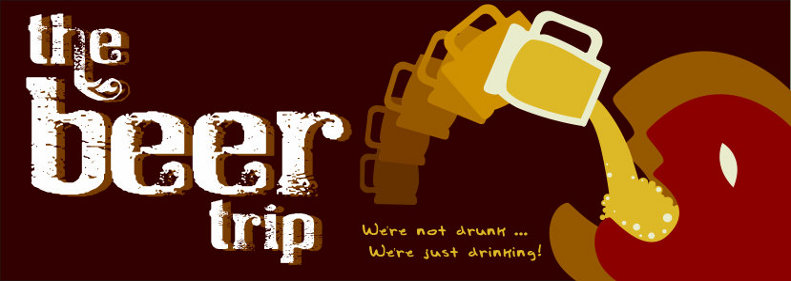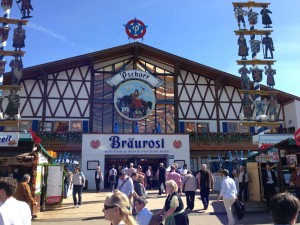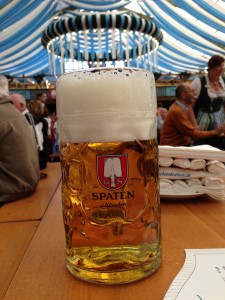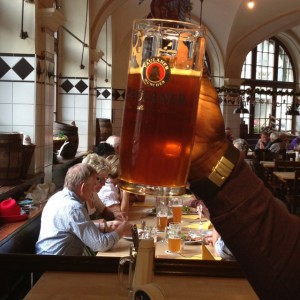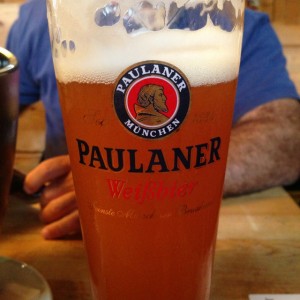Oktoberfest München 2012 Report


 Oktoberfest München. Somewhere imprinted in the mind of many a beer drinker, this festival represents the ultimate celebration of beer…and of lederhosen. And actually it’s that latter part that is the most discomforting for the average American beer drinker. It’s pretty damn hard to look manly in lederhosen. Maybe if you’ve got body hair like a sasquatch you could pull off the look without disrespecting your manhood, but I digress….
Oktoberfest München. Somewhere imprinted in the mind of many a beer drinker, this festival represents the ultimate celebration of beer…and of lederhosen. And actually it’s that latter part that is the most discomforting for the average American beer drinker. It’s pretty damn hard to look manly in lederhosen. Maybe if you’ve got body hair like a sasquatch you could pull off the look without disrespecting your manhood, but I digress….
We didn’t go to Oktoberfest for the lederhosen, we were there for the beer. If in the end, we woke up the following morning wearing lederhosen, then that meant two things: First, it must have meant the beer was really good. Second, the fact that we still have some clothes on means that we probably resisted the impulse to run naked through the beer tents. (Not as compelling as the urge to run naked through the hop fields of Belgium, but an impulse that we know we must resist.)
Oktoberfest…hmm…where do I start?
The first thing that you have to realize about Oktoberfest is that the beer is crap.
I’m not going to sugar coat the truth. Oktoberfest is a wonderful experience. The beer halls are each filled with thousands of people from all over the world drinking beer from liter mugs (called a mass, or more correctly Maß). Every single one of those thousands of people is a person with a story to tell (usually at a high decibel range), and a potential new best friend for the length of time that it takes you to drink your mass. In many ways, Oktoberfest is a celebration of beer as the ultimate social lubricant.
And the pretzels, oh the pretzels. Second to the people that you will meet, and the stories that you will come back with, the pretzels are calling me to return again someday to Oktoberfest.
The best thing that I can say about the beer is that it is relatively easy to drink. Not that I’ve frequently struggled with the task of beer drinking, it is a skill to which I seem to have a strong natural aptitude. Although I have trained extensively, and am licensed as a certified personal trainer. In fact, all you have to do is buy me a few rounds, and I’d be happy to act as your personal beer drinking trainer tonight.
Where was I?
The Germans are proud of their beer, and their beer history. And Oktoberfest is a celebration of that heritage.When talking about the history of German beer, it is impossible not to make reference to the Reinheitsgebot, which is also known as the German Beer Purity Law of 1516. That’s right, the Germans love their beer so much, and are so rigid about it, that they wrote laws about it. They probably even created the first government bureaucracy to enforce such laws, a 16th century precursor to the American Bureau of Alcohol, Tobacco, Firearms and Explosives (better known as the ATF…the E isn’t silent it’s just too loud for the font I’m using).
The Reinheitsgebot defined the only basic ingredients allowed to be included in a product sold as beer: water, barley and hops. In the same way, the ATF defines the four basic ingredients required for a redneck party to remember: alcohol, tobacco, firearms and explosives.
You’re probably thinking I made a mistake in the previous paragraph. Surely even a junior technical editor would have caught my mistake. The four basic ingredients in beer are water, barley, hops and yeast. Did I forget the yeast?
Well, that may be true, but the Reinheitsgebot was decreed in 1516. Louis Pasteur didn’t discover the role of yeast in the fermentation until the mid-1800’s.
In other words, for hundreds of years the Germans had no idea what was in their beer. But they had a law about it.
In fact, they still might have no idea what is in their beer. The first mass that we had at the Spaten Oktoberfest tent had a very pronounced chemical taste, like perhaps the water that went into the beer was downstream from a chemical spill.
Thankfully though, that first mass of Spaten contained alcohol, which made sampling beers from other tents a far more enjoyable endeavor.
That brings up the second important thing that you have to remember about Oktoberfest: If you’re going there to drink a traditional Oktoberfest style beer, you’re going to have to leave the fairgrounds and go elsewhere in Munich.
If you are so inclined, I’d recommend the Paulaner Brauhaus, which is a 5 minute walk from the east side of the fairgrounds. The Brauhaus is a small brewpub owned by Paulaner, but they brew their own beers here, and the Oktoberfest they had on tap was the most delicious Oktoberfest beer I’ve ever had…sweet, malty with a kiss of bitterness in the finish.
Wait a minute. You have to leave Oktoberfest to get a traditional Oktoberfest style beer? Are you barking mad?
Well, yes I am, but let’s deal with your first question first. We’ll save the barking mad bit for another time.
What we know of as an Oktoberfest-style beer is classified in the beer geek world as Märzen. A Märzen beer is a pale amber lager, medium bodied, malty flavor, with a clean dry finish. Many German brewers export their Oktoberfest-style beers to the US with labels proclaiming them to be Oktoberfest beers. (Samuel Adams also makes an Octoberfest beer that stands up quite well against the German standard bearers.)
These German Oktoberfest beers are basically created for the export market, as in, not good enough for German consumers, so we’ll send them to other countries.
The fest beer that is served in the Oktoberfest tents of Munich is much paler in color than a Märzen. The body is thin and light, and there is none of the malty sweetness that one would normally associate with an Oktoberfest beer.
Apparently this change occurred at Oktoberfest during the 1990’s. Just as America and the rest of the world were beginning to embrace the craft beer revolution, the marketing geniuses behind the major German brewers were dumbing down their beers, in a so called reaction to changes in customer tastes.
In fact, many beer geeks don’t classify the beer served at Oktoberfest as being Oktoberfest-style any more. The beer that is currently served is referred to as the Wiesn styke. Oktoberfest is held in Munich at a fairground, officially named Theresienwiese, but known to locals by its nickname Wiesn. Oktoberfest itself is generally referred to by locals as Wiesn.
You’d be hard pressed to distinguish any particular Wiesn beer from its year-round pale lager counterpart of the same Munich brewery. A small fraction more malt and body perhaps, and a very slight amber twinge that makes the beer appear more golden in color than yellow.
Sadly, if you want to make that type of comparison between Wisen and year-round pale lager, you can’t do it at Oktoberfest. Each Oktoberfest tent, though it may have seating for several thousand people, only serves one beer. That is the third important thing that you need to know about Oktoberfest.
The modern beer bars of this world have left many beer drinkers jaded. If there aren’t at least 20 choices on the beer menu, it feels like a let down.
At Oktoberfest, there’s one beer choice on the menu at each of the massive beer tents. The only decision to be made is how many liters to order. As you wander from tent to tent, you’ll find the same Wiesn style of beer in every tent. In fact, unless there has been an industrial accident upstream from the brewery (I’m looking at you Spaten), you’d be hard pressed to tell the difference between the Wiesn beers from the different breweries. Conformity is the keyword.
That said, at least the wine tent served a hefeweizen…which was a very welcome break during our time at Oktoberfest.
Before my Oktoberfest review sinks back into an overly negative tone, let me emphasize that even for the beer geek who disdainfully looks down on fizzy yellow lagers and the people who drink them, Oktoberfest is an experience that you will enjoy and look back on with fondness. In fact, I’m having a a hard time not smiling right now as I write this. And I must admit that some of my negative comments are exaggerations meant with a spirit of humor.
About a week after I got home from this trip, I went to a charity event where the only beer choices were Miller Lite, Coors Light, Bud Light and Michelob Ultra. Of course, I took that opportunity to sample them all, and truth be told, I’d have rather had a mass of Wiesn in front of me than any of these four choices. Yes, even the Spaten mystery chemical beer beats a mainstream American lager. If you are so inclined as to enjoy the fizzy yellow lagers, the Germans do produce some of the best.
Of course Munich is much more than Oktoberfest, even during Oktoberfest.
You can’t visit Munich without visiting some of the year-round beer halls around town.
Most famous, of course, is the Hofbräuhaus. Here it’s three choices of beer, so you do get a chance to compare their pale lager with their fest (Weisn) beer. They also have a Dunkel (dark lager). Truth be told, it’s all relatively light bodied beer, and I wouldn’t be surprised if the only difference between the varieties is food coloring. But, you go to Hofbräuhaus for the experience, not as a beer connoisseur…and if you do, you will have a great time.
Across the street is Ayinger am Platzl … great quality beer and more choice in beer styles. I enjoyed the Weizenbock and the Kellerbier, while pictures of the evening show that my friends enjoyed at least two other varieties of beer there.
Also in that general area, just a few blocks away, is Schneider’s Weisses Bräuhaus, home of the best Weizen beers. Fresh Schneider Weiss and Aventinus Weizenbock are hard to beat. And the 12% Aventinus Eisbock was a delicious treat and dangerous nightcap.
Elsewhere around town, we also tried an Augustiner bar that was less memorable, a Hacker-Pshorr bar, and we also went to the Lowenbräu beer hall and tried in vain to remember the advertising slogan they used in America in the 1970’s. I was close … I thought it was “Tonight, make it something special”… but it’s actually “Here’s to good friends, tonight is kinda special” … that’s right “kinda special”, like when they told you that you had to take that special class because you were a little behind the other kids …
Sadly we never made it to Andescher or the Andescher am Dom pub in town, which I understand to be beer highlights in Munich.
But this was just stage 1 of The Beer Trip for 2012 … better beer was in our future … and soon.








